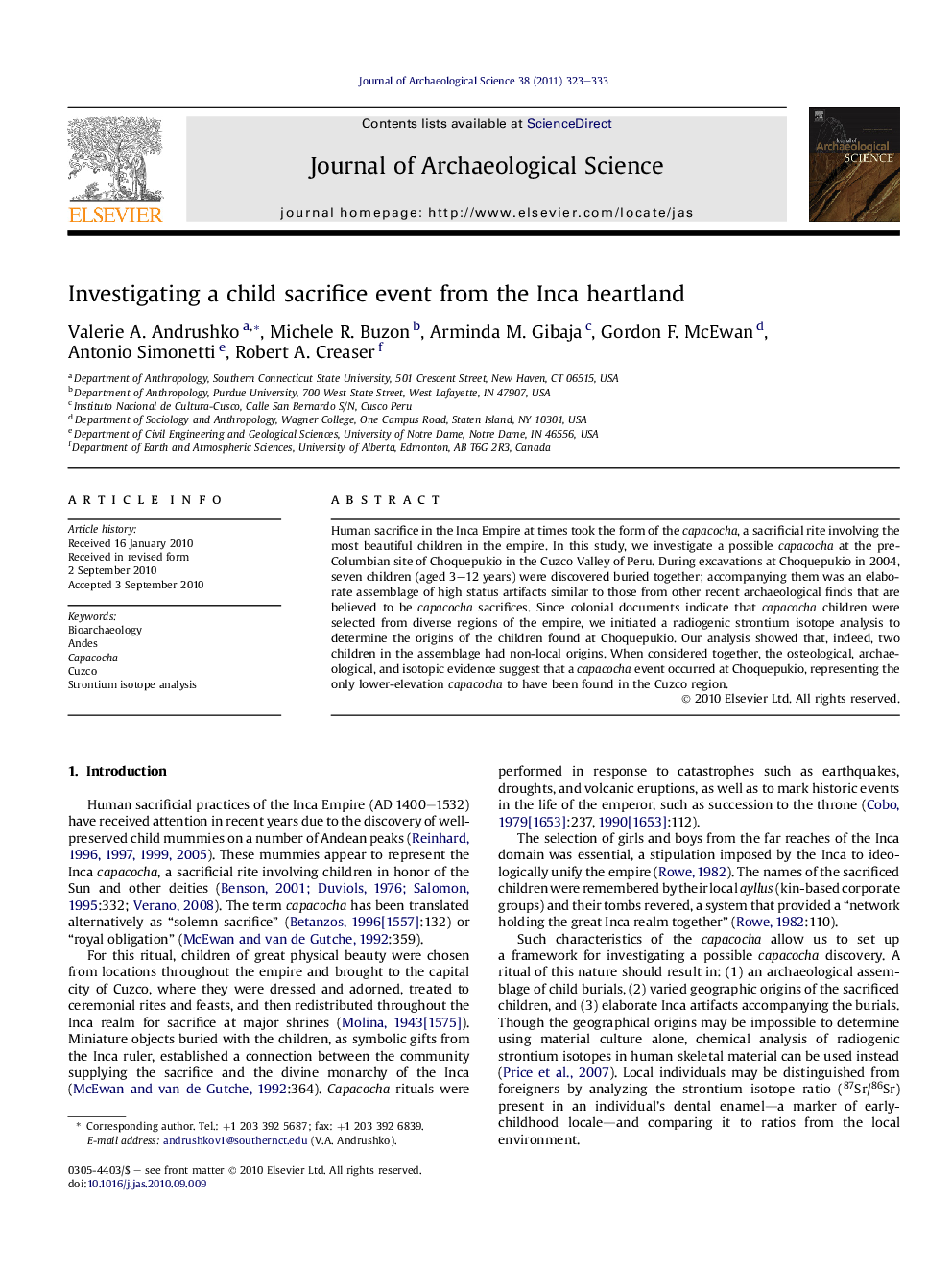| Article ID | Journal | Published Year | Pages | File Type |
|---|---|---|---|---|
| 1036208 | Journal of Archaeological Science | 2011 | 11 Pages |
Human sacrifice in the Inca Empire at times took the form of the capacocha, a sacrificial rite involving the most beautiful children in the empire. In this study, we investigate a possible capacocha at the pre-Columbian site of Choquepukio in the Cuzco Valley of Peru. During excavations at Choquepukio in 2004, seven children (aged 3–12 years) were discovered buried together; accompanying them was an elaborate assemblage of high status artifacts similar to those from other recent archaeological finds that are believed to be capacocha sacrifices. Since colonial documents indicate that capacocha children were selected from diverse regions of the empire, we initiated a radiogenic strontium isotope analysis to determine the origins of the children found at Choquepukio. Our analysis showed that, indeed, two children in the assemblage had non-local origins. When considered together, the osteological, archaeological, and isotopic evidence suggest that a capacocha event occurred at Choquepukio, representing the only lower-elevation capacocha to have been found in the Cuzco region.
